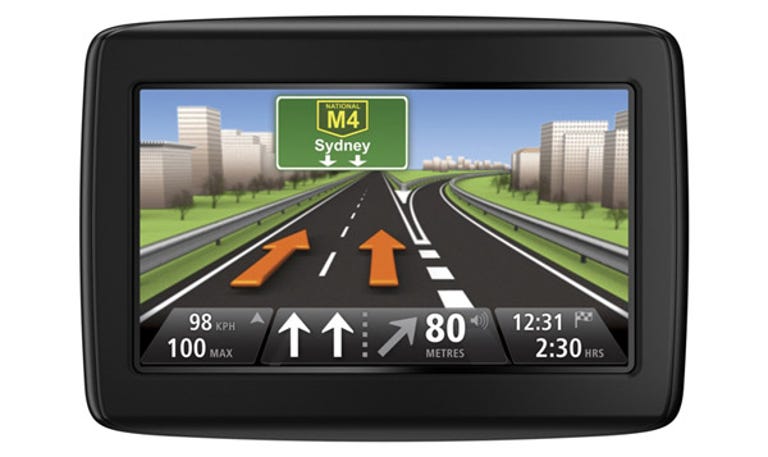 Why You Can Trust CNET
Why You Can Trust CNET TomTom Via 220 review: TomTom Via 220
With a keen price, and minus the frustrating voice-recognition system found in the rest of the range, the Via 220 proves that less is more; but still not enough to earn it top marks.
Despite having a higher model number than the previous Via models — remember the Via 160 and the Via 180? — the new 220 is actually the entry-level Via-branded unit.
The Good
The Bad
The Bottom Line
Design
The 220 is equipped with a 4.3-inch resistive touchscreen that works well both day and night, and doesn't suffer behind polarised sunglasses.Dressed in black, the 220's body is sturdy, but it doesn't feel particularly special. The built-in speaker goes up to a decent volume without becoming an unintelligible ocean of crackle and hiss. As with other Via models, the windshield mount is integrated into the body, allowing it to fold up compactly for storage, while the dial that operates the suction cup is a model of simplicity.
The interface sports the same spiffed-up graphical package seen on the other Vias, as well as thelatest-generation Go models. Thankfully, the flashier graphics don't diminish the unit's ease of use, or introduce unnecessary lag. The map screen is the least-changed aspect, so it's still easy to read on the go, although the name of the next street should be easier to find onscreen.
Features
With a lower price, naturally, comes fewer features. Although, given our troubled time with the voice-recognition system on the other Via models, this is actually rather a boon.
Other items missing from the specs sheet include traffic messaging, FM transmission, music playback and 3D landmarks. Indeed, the only missing feature that we pined for was Bluetooth hands-free.
On the plus side, speed limit info is supplied for most metro roads. Warnings are present for red light and speed cameras, although it can be hard to tell from the tiny flashing icons what type of camera it's warning you about.
There's also lane guidance for most streets and roads, as well as junction view for motorway exits and intersections. The latest Whereis maps are included and upgradeable for free during the first 90 days of use.
Performance
We found the Via 220 to be a bit slow to acquire initial GPS lock — on many occasions, it took between 30 seconds and two minutes to get a satellite fix. Once it knows where it is, route calculation times are quick.
In lieu of traffic messaging, TomTom has included its collection of real-world historical speed and traffic data, dubbed IQ Routes. Unfortunately, it doesn't seem to add too much extra intelligence to the routes generated. For instance, it will still blindly lead you up King Street, Newtown, NSW, during weekends when the road does a passable impression of carmageddon. Like other GPS devices, it will get you from A to B, but you also have to fight your way past the usual assortment of silly or circuitous routes, as well as u-turns of questionable legality.
The text-to-speech system does a passable job of enunciating most road names, but there are a few anomalies, such as Saint Bernard Street morphing into the rather more comical Street Bernard Street.
We're still not sure what was wrong with the old TomTom Home software — via its simple interface, we were able to install software and map updates, purchase overseas maps and pay for and download celebrity voices. Additionally, it had a function called MapShare, which allowed users to share any errors that they saw on the maps, and download verified map corrections from the TomTom community.
Despite the MyTomTom software having debuted late last year, MapShare and celebrity voices are still listed as "coming soon". And the features that are available, such as software and map updates, are flaky at best. Indeed, MyTomTom kept thinking that we had a Start 20, not a Via 220, and we were unable to update our Via despite an afternoon of head-banging frustration.
Conclusion
With a keen price, and minus the frustrating voice-recognition system found in the rest of the range, the Via 220 proves that less is more; but still not enough to earn it top marks.


